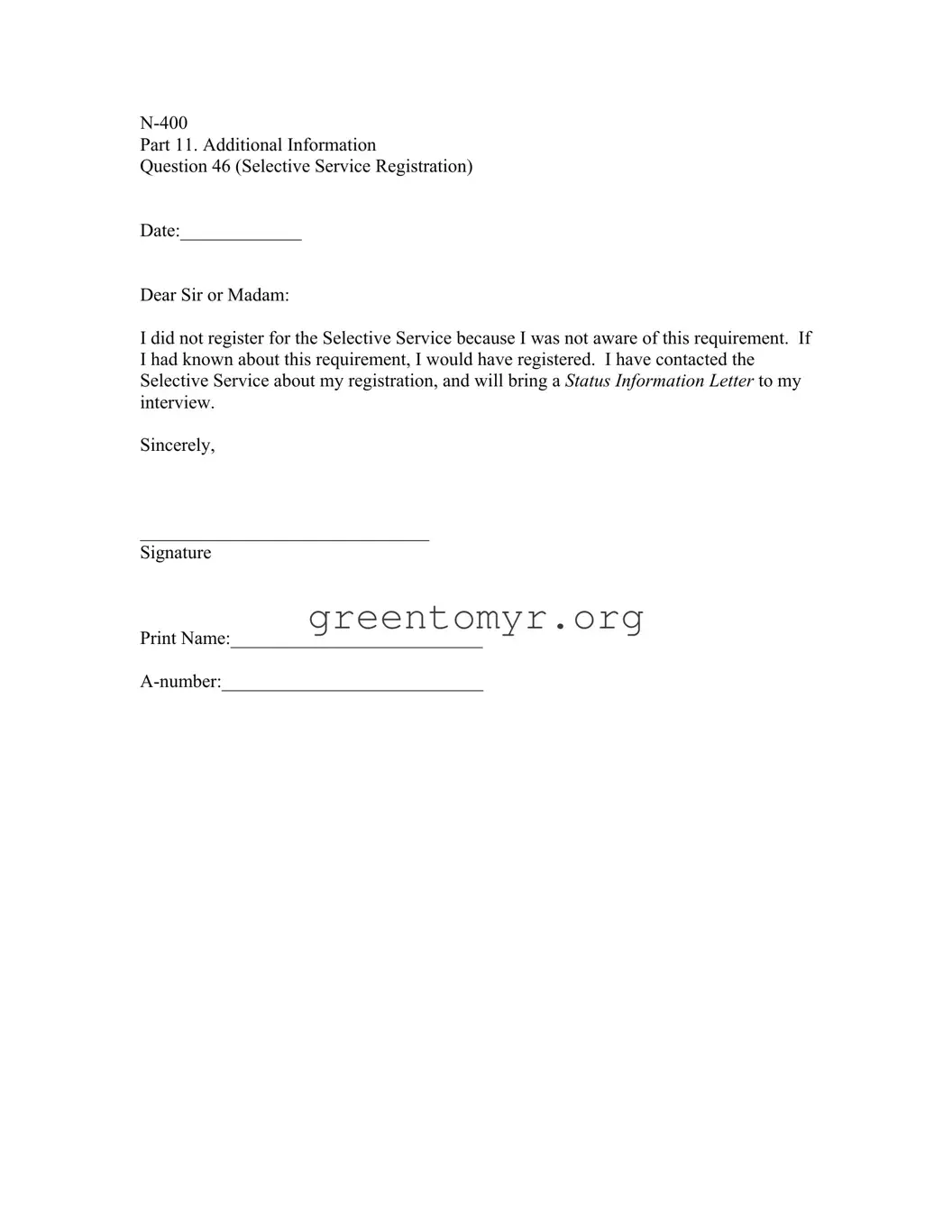The Letter Sample of Failure to Register Form is a template provided to individuals who have not registered for the Selective Service. This situation may arise for various reasons, commonly due to a lack of awareness of the requirement. The form allows applicants to explain their circumstances when filling out the N-400 form, specifically Part 11, Question 46.
Why is registering for the Selective Service important?
Registering for the Selective Service is a legal requirement for males aged 18 to 25 in the United States. This registration plays a crucial role in the nation's ability to draft individuals for military service during times of national emergency. Failing to register can have significant consequences, including delays or a denial of immigration benefits.
What should I include in my letter?
Your letter should clearly state your failure to register and the reasons for it. Here are some key points to consider including:
-
A clear acknowledgment of not registering.
-
An explanation of your lack of awareness regarding the registration requirement.
-
A statement that, had you known, you would have taken the necessary steps to register.
-
A mention of your intention to provide a Status Information Letter from the Selective Service at your interview.
The Status Information Letter serves as official documentation from the Selective Service confirming your registration status. This letter can clarify your circumstances and assist immigration authorities in understanding why you may not have registered. It is a key piece of evidence should you need to explain your situation during the naturalization process.
You should reach out directly to the Selective Service System. They provide various ways to request a Status Information Letter, including online options and traditional mail. It is advisable to have your personal information ready, such as your full name, address, and other identifying details, to streamline the process.
When should I submit the letter and other documentation?
It is best to submit your letter and any related documentation in conjunction with your N-400 application or during your naturalization interview. If you have not registered, including this letter can help provide context to your application and may alleviate any concerns about your compliance with federal regulations.
What if I have other questions about my status?
If you have further questions regarding your registration status or the naturalization process, reaching out to an immigration attorney or a legal aid organization specializing in immigration issues can be beneficial. They can provide personalized assistance in navigating your specific situation and help ensure you meet all necessary requirements.
Can I still register for the Selective Service after failing to do so initially?
Yes, individuals who have not registered for the Selective Service can still do so, but the timing of your registration may affect your eligibility for certain benefits. It is advisable to register as soon as possible and to inform the authorities about your failure to register, along with your reasoning and any supporting documents.
